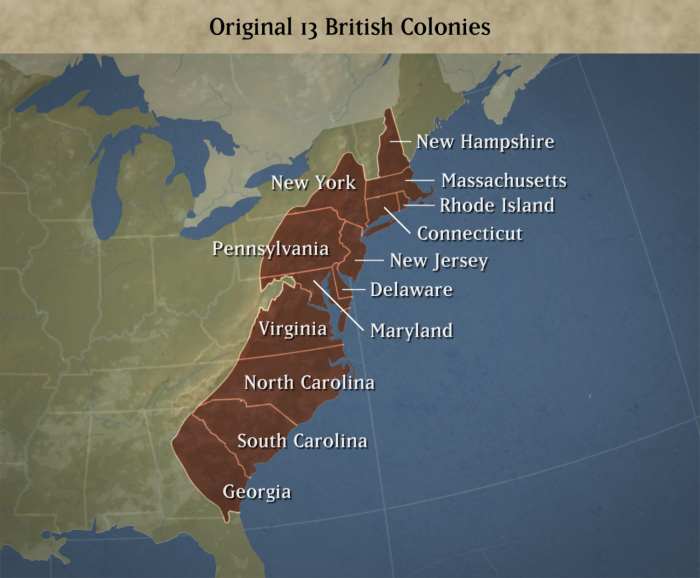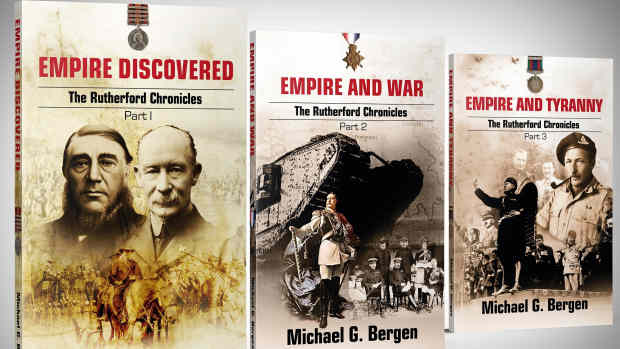America in the 17th Century
America in the 17th Century
In the 17th century, America was primitive and nearly vacant. A few million Neolithic people were scattered over thousands of miles. Today it is the mightiest, richest, most dynamic civilization in human history. America is an idea—individual rights and democratic self-government, founded upon the twin pillars of Faith and Freedom.
The American colonies dashed many a Utopian dream. These thirteen colonies were planted by England over the course of 125 years.
The founders saw in the American Experiment an opportunity to create a society according to plan. The concept was that ordered liberty would breed economic prosperity. No large nation on earth has provided more stability, prosperity, security, and liberty to more people than has the United States. Americans are freer than other peoples to pursue happiness.
AMERICANS
Americans are creative, ambitious, aggressive hustlers: builders, doers, go-getters, dreamers, hard workers, inventors, organizers, engineers, and a supremely generous people. They seek the American Dream, largely embodied in the "rags-to-riches" story.
Alexis de Tocqueville observed: "In a democracy private citizens see a man of their own rank in life who rises from that obscure position in a few years to riches and power; the spectacle excites their surprise and their envy. . . . To attribute his rise to his talents or his virtues is unpleasant, for it is tacitly to acknowledge that they are themselves less virtuous and less talented than he was. They are therefore led, and often rightly, to impute his success mainly to some of his vices; and an odious connection is thus formed between the ideas of turpitude and power, unworthiness and success, utility and dishonor."
English Colonies in America
The colonies planted by England were far different from those of Spain or France. England had invented the first free market capitalist society in the world. It bequeathed to America the English Common Law tradition, unknown in the rest of the world. England had invented the secular professions of lawyer and judge, and a system of civil justice based on contracts, equal access to courts, and a right to private property.
England passed on to America its incredible advances in agriculture: how to match crops with soil and climate; to plant, fertilize, and graft; to dress vines and prune fruit trees; to breed livestock and prescribe for sick animals.
The English were experts at building roads and bridges. The family firm and inheritance across generations were institutions in England. The English proved to be fabulous at mining and textiles, but most of all trade.
England had three main reasons to establish colonies in America. Timber, fish, and furs from America would bring in royal revenues and lessen dependence on imports. America would provide a market for English goods, particularly textiles. Emigration would drain off England's religious dissenters, as well as vagrants, criminals, and the unemployed.
American Indians
In 1630, American Indians numbered 400,000 east of the Appalachian Mountains. 3,800 people from England had joined them. The Indians were crippled by tribal feuds, and then decimated by infectious diseases such as smallpox, chicken pox, measles, and influenza, for which evolution or Providence had afforded them no protection.
Up to 90 percent of these Indians had disappeared from disease by 1670. The Indians had low fertility rates, partly because they breast-fed infants for three or four years. They suffered from very high infant mortality.
In contrast, the English reproduced at the biological maximum—8.3 children per wife. By 1690, the English outnumbered the Indians east of the Appalachians. The English colonists did not come to America to convert, enslave, or kill the Indians.
Colonists in America
In the 1630s, 80,000 people from England came to America. They were mostly poor people hoping for a better life, with the freedom to live as their faith dictated. Colonists came to America to escape the high cost of food in England, which had increased 400 percent in 100 years, and to escape the cities of England, which were sinkholes of filth, crime, and disease.
The England they left behind was full of dishonest shopkeepers, crooked gamblers, gangs of violent vagrants, pickpockets, drunkards, and whorehouses. 20 percent of English brides were pregnant walking down the aisle. 28 percent of the children born were bastards.
These colonists suffered treacherous voyages across the stormy Atlantic Ocean, only to risk early death in America. There was no safety net or social services in those days. They knew the hardships beforehand, but relied on courage and faith. 150,000 of them flooded into America in the 17th century—for land, water, and wood.
Wood was more precious than gold and abundantly available for those with an axe and willing shoulders. America was blanketed by forest, unlike deforested England. Virginia looked "like a forest standing in water" where "we cannot see our neighbor's houses for trees."
Families migrated to New England as units, far different from Virginia where fear of disease from swamps made the first settlers almost all men.
Colonists & Indians
The English settlers were so far advanced compared to the indigenous tribes in technology, agriculture, and plain organizational skills, that if it was a Darwinian contest for an ecological niche, it was no contest.
The colonists did not think themselves racially superior to Indians. They believed Indians were only dark- skinned due to effects of the sun. They thought themselves culturally superior; though it is not clear what you would expect them to think when they met people who had not yet discovered the wheel, possessed no written language, and were essentially living in the Stone Age.
The ideas promulgated by those who are on a mission to deconstruct America—the colonists stole or defrauded Indians of their land and committed genocide—are false.
Indians were thrilled to sell land to colonists—they had an almost unlimited supply of it. The Indians coveted the knives, hoes, clothes, and jewelry the colonists had a limited supply of to trade. Indians often initiated these trades. The Puritans allowed Indians to hunt and fish on lands after they purchased them. Boundary disputes were rare.
Harvard accepted Indian students in its second decade. Individuals were punished by colonial governments for unauthorized encroachments on Indian lands. Colonists could and did receive the death penalty for murdering Indians.
VIRGINIA
Jamestown was founded in 1607 in Virginia, but proved to be nursery for mosquitoes. Disease and famine reduced the colony to a mere forty souls by 1608, and two years later Jamestown was abandoned. Richmond was chosen as a better site.
Virginia grew as men cut timber, and traded hatchets, swords and muskets to the Indians for corn. They built wharves, warehouses, stables, churches, blockhouses, and forts. Each man planted a private plot of corn, beans, potatoes, carrots, and cucumbers. Soon they began to keep livestock for protein.
John Rolfe discovered that the way to prosperity in Virginia was tobacco—not the acrid tobacco the Indians used; Rolfe imported aromatic Spanish varieties. By 1618, Virginia was exporting 50,000 pounds of tobacco per year.
There was a grave shortage of women until 90 single young women came over in 1619. An iron foundry and a school were established.
On Good Friday, 1622, Indians massacred 347 whites, and condemned another 500 to a slow death by destroying their animals and crops, while besieging them inside a fort. The colonists were outraged and declared their intention to cleanse Virginia of all Indians in retaliation. Before they could get around to that, the Indians massacred 500 more whites in 1644—mutilating the women and children. The whites thus deemed the Indians incorrigibly savage and set out to subdue them.
The white population of Virginia grew from a mere 1,132 in 1624 to 15,000 in 1650.
Virginia was founded by prosperous tradesmen who desired to become country gentlemen. The goal was a spacious manor house on broad acres of land, where one would join the governing class; not to wallow in luxury and indolence, but to work long hours, and accept the burden of public responsibility. Only landowners had the right to vote.
Virginia was attractive to ambitious Englishmen, as they could make seven times the wages in England. Virginia attracted men of extraordinary talents. The Virginia gentleman would become a Justice of the Peace; patron, confessor, and overseer of the poor.
In the 17th century, the principle source of labor was the white indentured servant. After they fulfilled their contracts of seven years unpaid servitude, most moved on to North Carolina, Delaware, Maryland, or Pennsylvania. Around 1700, they began to be replaced by uncouth Negro slaves from the African jungle.
Virginia became an aristocracy. The "best" families tended to intermarry, and 100 families came to control the wealth and government of Virginia. The Virginia gentleman raced horses and hunted deer. The vast majority were of the Anglican denomination of the Christian Faith.
New York
New Amsterdam was founded by Dutch merchants in 1614. They purchased Manhattan Island from Indians for sixty guilders in 1625, and started bowerys (farms). They also established the first brewery in America.
New Amsterdam became a lawless, bustling harbor town of drunken sailors and Indians. In 1643, Indians slaughtered half the white settlers, forcing the Dutch to retreat into their fort, behind what is now Wall Street. The Indians removed the heads of their victims as trophies.
To repopulate, New Amsterdam became the first settlement in America to open its doors to people of all nations. The population boomed to over 10,000 by 1664, thanks to a steady influx of French Protestants (Huguenots), Belgian Catholics (Walloons), and Sephardic Jews.
In 1664, the English took over New Amsterdam and gave it a new name: New York. The main street was Broadway. The Dutch contributed many words to America: boss, cookie, crib, snoop, stoop, spook, and kill (for creek).
PILGRIMS
The Mayflower landed in 1620 at Plymouth, Cape Cod, Massachusetts—300 miles off course. On board were 37 Pilgrims, and about 65 other folks. It had been a terrible voyage, nine weeks through high winds and huge waves. The Mayflower was dark and wet; the air was putrid. Everyone drank beer—even the children. The Pilgrims sang Psalms (spiritual songs) every day.
A Pilgrim is someone who takes a journey for religious reasons. The Pilgrims set out across the Atlantic Ocean and into the unknown. No one knew what was to become of them. They were afraid but they put their faith in God.
The Mayflower Compact, an agreement signed by all men aboard the ship as to the civil order for the new colony, was signed in the "Name of God" by the "Grace of God" for the "Glory of God" in the "Presence of God" and for the "Advancement of the Christian Faith"
The Pilgrims had to build shelter in cold, rainy, windy, icy weather. Though run down from the voyage, they worked constantly in wet clothing, and nearly all of them fell sick. Most of the wives died, as did all but one of the 20 young single men. The Pilgrims suffered, buried their dead, and survived—Together.
The Pilgrims observed the Sabbath. From Saturday afternoon to Monday morning no one did any work—not even cooking. Boys and girls learned to read from the Bible.
Half the Pilgrims died the first winter. The American Indian Squanto taught the Pilgrims how to plant corn, trap animals, and tap maple trees for syrup. The first Thanksgiving Day was celebrated in 1621—a day to pray and thank God for His blessings.
The colony only survived after it abandoned the communal idea for the idea that everybody was on their own. Each family after 1623 had to feed itself from its own acre of land rather than depend on the labor of others.
Pilgrim leader William Bradford wrote that experience proved "the vanity of that conceit of Plato's . . . that the taking away of property and bringing community into a commonwealth would make them happy and flourishing." In fact, "the young men that were most able and fit for labor and service did repine that they should spend their time and strength to work for other men's wives and children without any recompense. . . . Let none object this is men's corruption . . . all men have this corruption in them."
An early challenge to the moral universe of the Pilgrims was posed by Thomas Morton. He founded a little community to the north of Plymouth with a band of godless men. They erected an eighty-foot-tall antlered Pagan Maypole around which they drank, danced, and fornicated with Indian girls. Their motto was "Drink and be merry, merry, merry, boys; Let all your delight be in hymen's joys!"
In 1628, Governor William Bradford dispatched his militia under hired gun Miles Standish to expel the intruders and ship Morton back to England.
PURITANS
The Puritans were a humble, loving people. They established the Massachusetts Bay Colony in 1628. New Hampshire and Maine were also founded in the 1620s.
The Puritans believed that if they established a Godly community, God would look upon them with favor. They would provide a lesson for all men—not by what they said, but by how they lived.
The Puritans were less interested in discussing theology than in applying a simple and pure orthodoxy to everyday life and society. Their lives were threatened daily by the hardships of a savage America. A certain singlemindedness was required to overcome the unpredictable perils of a wilderness. The Puritans saw themselves as reliving the story of Exodus; as the new Children of Israel.
The Puritans strove to live by the Scriptures of the Bible; to build a holy community, with a common quest and common way of living. The Puritans were a community of self-selected conformists. As Dr. Nathaniel Ward said: "The liberty of dissenters is the liberty to keep away from us."
While they enjoyed food, drink, and dancing as much as others, they were definitely against "atheism, witchcraft, blasphemy, murder, sodomy, buggery, adultery, and whoredom;" as well as the raucous and the ribald.
The Puritans lost half their settlers the first winter from starvation, scurvy, or frostbite. But within a few years they had built seven towns, including Boston. There was plenty of empty land around, which the Puritans purchased from Indians. John Winthrop noted that the Indians "enclose no land, neither have they any settled habitation, nor any tame cattle."
To obtain approval to start a new town, fifty or sixty men had to show proof that all Indian claims to the land at the proposed location had been retired; present a plan that showed a church, parsonage, school, and town hall; and endowed each founder with a plot of land.
Modern feminists lambast the patriarchal society of the Puritans, but extant writings by Puritan women show they were more zealous for the Puritan way of life than the men.
The Puritans had no illusions about creating a Utopia. They were Calvinists; they had a vivid discernment of evil. The Puritans believed in positive liberty—liberty to do what is right, good, and proper, not license to be corrupt and wallow in willful sin. As John Winthrop put it: "liberty to that only which is good, just, and honest; maintained and exercised in a way of subjection to authority."
The colony was not a theocracy; the clergy was separate from the state. But the state outlawed idleness, gambling, and public lewdness (including kissing). Work and travel were forbidden on the Sabbath. As Nathaniel Ward explained: "God does nowhere in His word tolerate Christian states to give toleration to adversaries of His truth, if they have power in their hands to suppress them. . . . Poly-piety is the greatest impiety in the world."



























